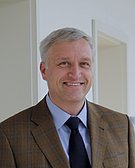Evaluation of electromyostimulation in the inpatient rehabilitation of cardiological and orthopaedic patients
by means of randomised controlled trials
Project overview
The term "sarcopenia" refers to an age-associated excessive loss of muscle mass, which is associated with a corresponding reduction in muscle strength. In addition to this pure form, there are overlaps with cachexia, weight loss due to mostly chronic inflammatory reactions, and malnutrition. The changes in muscle mass have an impact on metabolism, particularly glucose and fat metabolism, as well as functional limitations. The reduction in muscle strength restricts the performance of everyday tasks and social participation.
Sarcopenic patients pose a particular challenge for working in a rehabilitation clinic because their muscularly severely deconditioned status means that they can only participate in exercise programmes to a limited extent. In addition, they often do not achieve any relevant training impulses due to their limitations, meaning that only minor adaptations and improvements are the rule during the course of rehabilitation.
Studies across the entire spectrum of neurological conditions such as muscular dystrophy through to top athletes in competitive sport show that electromyostimulation can significantly improve muscle mass and, in particular, muscle functionality in addition to conventional mechanical stimuli. Due to the different forms of application in terms of scope and stimulation schemes, it is not yet possible to provide standardised guidelines. Furthermore, there are also questions regarding the kinetics of the changes.
This study therefore aims to test the applicability of electromyostimulation over the course of a four-week rehabilitation stay. The target group for the study is sarcopenic patients with cardiological and orthopaedic conditions. The change in muscle strength, measured using muscle function tests, is defined as the main target parameter. In addition, a number of other questions will also be investigated. Among other things, we are discussing the optimal application options in terms of whole-body and partial-body stimulation and the possible effects of the procedures on other functional parameters such as maximum oxygen uptake. It is also planned to investigate possible effects on the sustainability of the rehabilitation stay, such as self-efficacy or everyday activity.
Further information
- Duration: 2018 - 2020
- Responsible: Chair of Rehabilitation Sciences
Project management

Prof. Dr. med.
Frank Mooren
Chair holder
Faculty of Health (School of Medicine) | Chair of Rehabilitation Sciences
Holthauser Talstraße 2
58256 Ennepetal